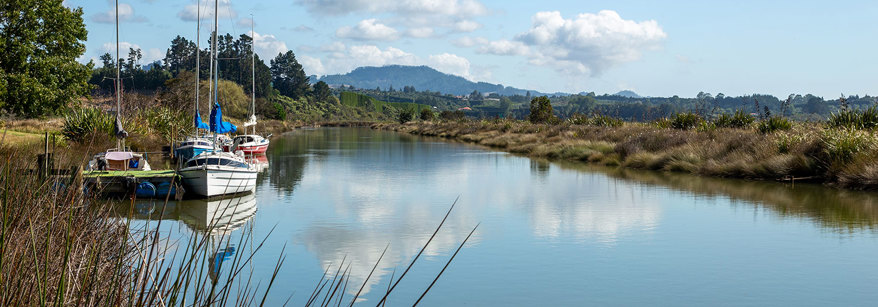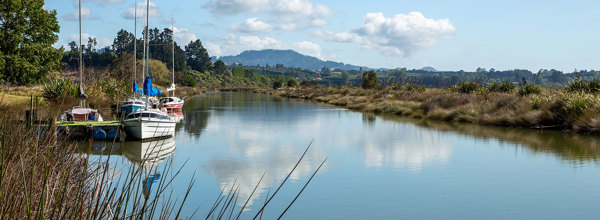The Henry Road Ford bathing site in the Uretara catchment is ranked as one of the highest risk bathing sites in the region, according to 2016/2017 Recreational Waters Surveillance Report (Scholes 2018). Results collated between 2012 and 2017 report a mean Escherichia coli concentration of 478cfu/100mL, which sits between the Alert/Amber (260 cfu/100mL) and Action/Red (550 cfu/100mL) thresholds set in the Microbiological Water Quality Guidelines (MWQG) (MFE 2003).
In response to the Recreational Waters Surveillance Report, an investigation was designed to gather a more in-depth understanding of the E. coli issue within the catchment and direct the focus of mitigating actions. The objectives of this investigation were to determine; where the E. coli loads might be coming from within the catchment, if any patterns could be seen in regard to weather and flow patterns, and identify the contributing animal sources (Human, Ruminant, Canine, and Avian) via faecal source tracking (FST).
This investigation found:
- E. coli concentrations were in the normal range in the middle-upper section of the mainstem Uretara and only rose above the Alert/Red threshold (550cfu/100mL) below the confluence with the Boyd stream. The Wharawhara tributary showed similar concentrations.
- The Boyd and Quarry streams often showed elevated readings starting in the upper catchment. The results don’t appear to be directly linked to rainfall intensity though elevated results do occur when heavy rain falls after a dry period indicating ‘first flush’ events can drive a significant elevation. This is consistent with faecal accumulations on pasture and in sediments being washed into the stream rather than direct point source.
- E. coli concentrations on the Boyd and Quarry Streams vary significantly in absence of large changes in flow. This suggests that direct deposition of faecal matter into the stream may play a key role in elevated results at Henry Road Ford.
- Overall load contribution was approximately equal between the Uretara and Boyd sub-branches, despite a much higher flows on the Uretara branch. This implies that the Boyd sub-branch has a disproportionate load contribution to the Henry Rd Ford site.
- Faecal source tracking (FST) identified a pattern of ruminant E. coli signature in the steeper landscape which is overtaken by a strong avian signature in the rolling landscape where horticulture becomes dominant. This dominant avian signature continues down all pathways to the Henry Rd Ford. These results indicate that the source contributions from overland flow events vary depending on the location and therefore the land use within the catchment. Ruminant signatures in the grazed steeper landscape are most likely linked to livestock but the source of the avian signature is unknown. This could possibly be resident Pūkeko or itinerant exotic species such as Canadian geese.
Two localised contamination events at Henry Rd only showed strong avian signal. This indicates bird populations in the lower catchment can impact water quality at the swimming hole without input from the wider catchment.
- An additional investigation was made into DNA testing of the water column throughout the catchment in January 2020. This technique analyses DNA material in the water, not E. coli directly, therefore it cannot provide direct confirmation of contaminant sources or population sizes of specific species. When considered alongside other information like water samples and observations taken at the time it can provide a loose correlation with the types of animals that are in and around the water more often than others. The aim of this investigation was to provide some insight into the types of animal species in and around the stream.
This investigation found:
- Of the avian species identified Pūkeko was overwhelmingly the highest represented.
- No chicken DNA was found which helps eliminate the possibility that chicken manure might be a contributing factor (alongside the timings of application vs E.coli concentration spikes).
- Some larger bird species (turkey and goose) were present but not in large quantities.
References
Microbiological Water Quality Guidelines for Marine and Freshwater Recreational Areas


